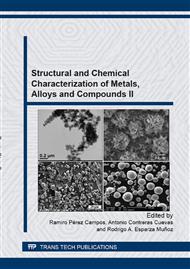p.23
p.29
p.37
p.45
p.51
p.59
p.67
p.77
p.85
Combination of Grinding and Wet Welding to Repair Localized Cracking in T-Welded Connections
Abstract:
This paper presents experimental research work on the combination of grinding and wet welding techniques to repair T-welded connections employed in the construction of offshore structures. A longitudinal rectangular grinding profile was performed at the weld toe of T-welded connections for localized cracking material removal. Two different grinding depths of 6 mm and 10 mm were performed in the welded connections to eliminate two different level of damage depth. Subsequent wet welding was applied in the grinded region to repair the grinded material. The wet welding was performed in a hyperbaric chamber simulating three different water depths: 50 m, 70 m and 100 m (shallow water). Once the combined repair techniques were performed, further experimental work was done to characterize the mechanical behavior of the repaired structures. The mechanical characterization was done with tensile, Charpy tests and Vickers Hardness tests. The region of interest from the structures was the weld toes the grinded-wet welding repair of the T-welded connections. Subsequent scanning electron microscopy (SEM) was also performed to examine the developed microstructures in the T-welded connection. The results showed that the combination of the repair techniques can restore the mechanical properties of the damaged structures. This was demonstrated by the measurement of the ultimate tensile strength, which were similar to those measured with no repair applied techniques. But the Charpy energy values were quite lower to those previously measured. This behavior was attributed to the level of porosity formed by the high level of gases created during the welding process for the simulated water depths, which were more severe at the higher water depth resulting in pore formation
Info:
Periodical:
Pages:
51-58
Citation:
Online since:
May 2014
Keywords:
Price:
Сopyright:
© 2014 Trans Tech Publications Ltd. All Rights Reserved
Share:
Citation:


